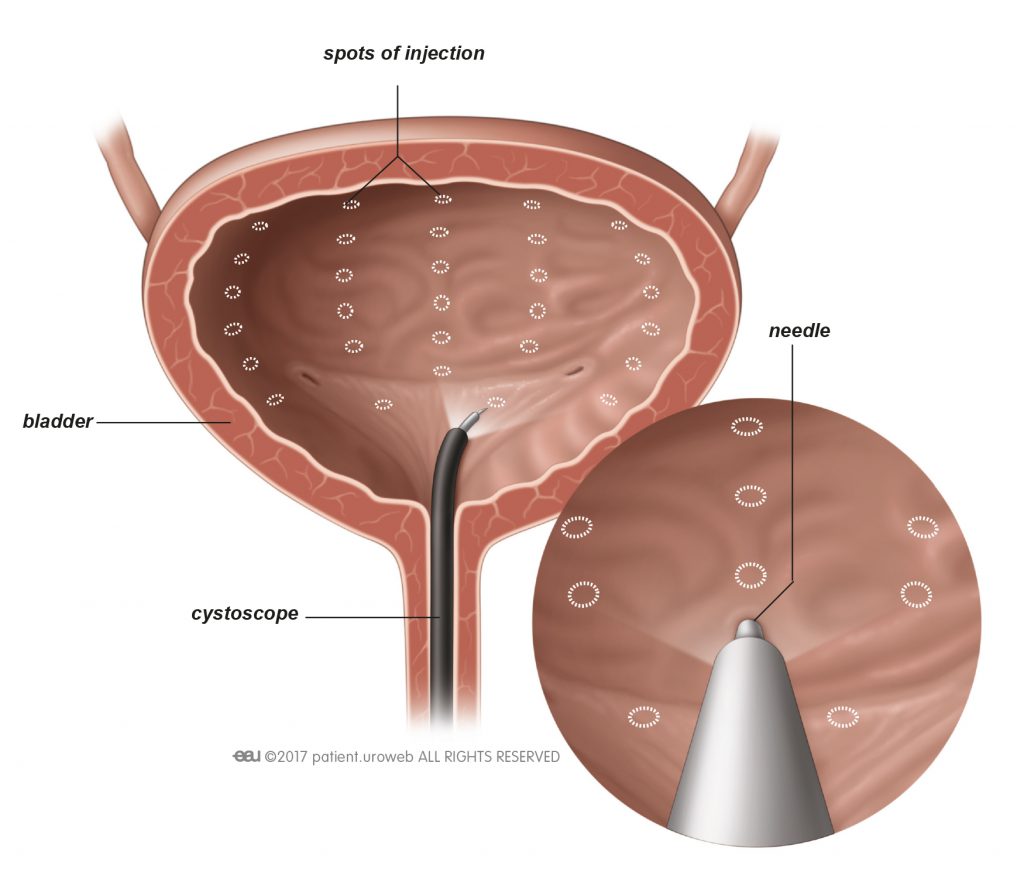Your doctor may suggest treating your urinary incontinence with botulinum toxin injected into the wall (lining) of your bladder. This treatment is often used in people who have been diagnosed with an overactive bladder, but it is also used to help treat urge incontinence. Botulinum toxin helps the muscles relax, which will give you more time to get to the bathroom when you feel the need to urinate.
The procedure involves filling your bladder with an anaesthetic liquid to numb it. A thin tube with a tiny camera on the end, called a cystoscope, is then inserted up your urethra and into your bladder. Your doctor will then pass a special needle through the tube and begin injecting botulinum toxin into the wall of your bladder.
Your doctor will be able to advise you if botulinum toxin is a treatment option for you and discuss potential side effects, such as the risk of urinary tract infections, urinary retention and the need for repeated botulinum toxin injections as this is a temporary treatment and the effects will wear off over time.
The injections are done under a local anaesthetic.


